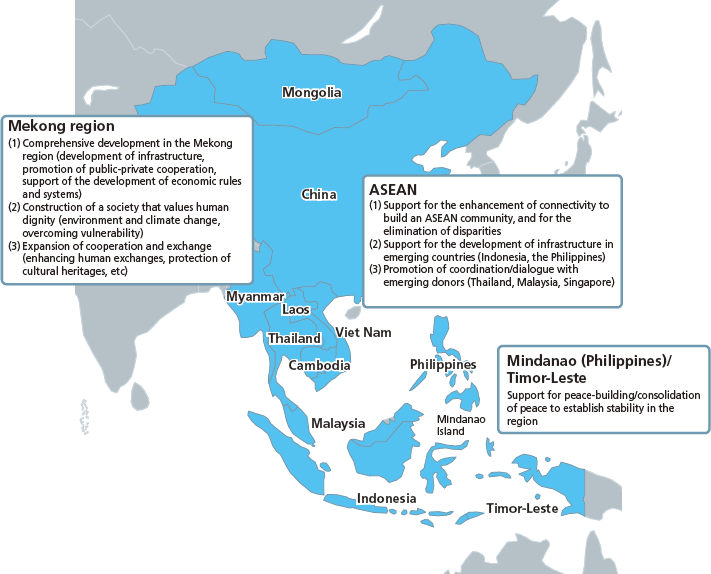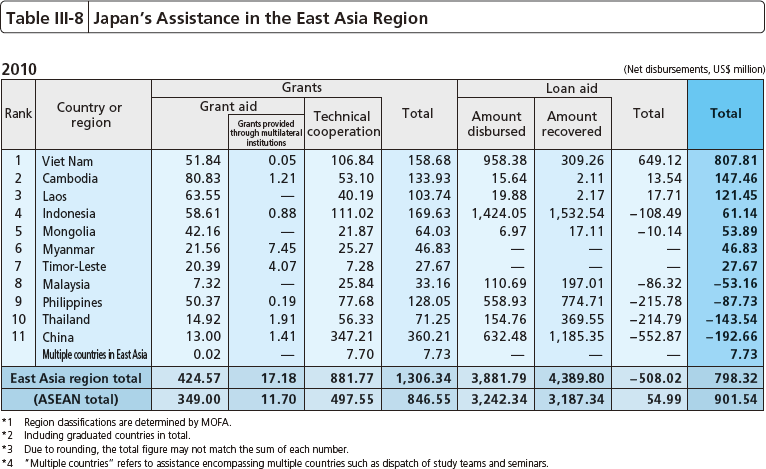Japan's Official Development Assistance White Paper 2011
1. East Asia
East Asia consists of a variety of nations: countries such as South Korea and Singapore, which have attained high economic growth and have already been shifted from aid recipients to donors; least developed countries (LDCs) (see "Terminology" on page 69) such as Cambodia and Laos; countries such as China, which still has internal disparities despite its dramatic economic growth; and countries such as Vietnam, which is in the process of transitioning from a centrally planned economy to a market economy. Japan has close relationships with these countries in all aspects of politics, economy, and culture, so the development and stability of the region significantly impacts the security and prosperity of Japan as well. From this perspective, Japan engages in assistance activities, responding to the diverse socio-economic circumstances of East Asian countries and to changes in the type of aid needs.
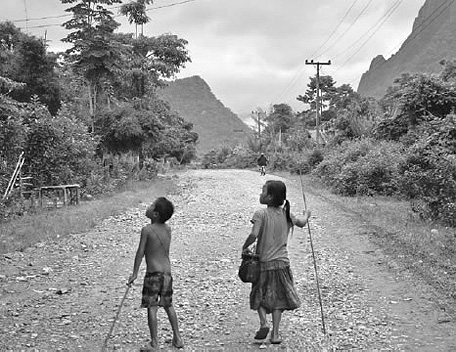
A scene of rural area in Laos (Photo: Isamu Yamamoto)
<Japan's Efforts>
Japan has contributed to the remarkable economic growth in East Asia by implementing economic cooperation that combines ODA with trade and investment, including the improvement of infrastructure, development of systems and human resources, promotion of trade, and revitalization of private investment. Currently, Japan is aiming to further enhance open regional cooperation and integration while sharing basic values, to promote mutual understanding, and to maintain solid regional stability. Therefore, Japan has made efforts to respond proactively to transnational problems such as natural disasters, environment and climate change, infectious diseases, and terrorism and piracy. Japan also works to promote mutual understanding through large-scale youth exchanges, cultural exchanges, and projects to disseminate Japanese language education.
Although the impact of the global financial and economic crisis started in 2008 has largely been overcome in East Asia, in order for Japan and other Asian countries to achieve further economic prosperity, it will be important to help Asia to be "a center of growth open to the world." Accordingly, Japan provides assistance to strengthen Asia's growth and to expand domestic demand in each country. As concrete measures, Japan announced in April 2009 that it would disburse up to ¥2 trillion in ODA assistance. Under this initiative, Japan currently provides steady assistance for such efforts as improvement of infrastructure, support for the socially vulnerable, establishment of low-carbon societies (see "Terminology" on page 77), and development of human resources. (Approximately ¥675 billion was disbursed from 2009 until July 2011.)
•Support for Southeast Asia
Members of the Association of Southeast Asian Nations (ASEAN) (Note 22) aim for the build of the ASEAN community by 2015. Japan has continued to assist the enhancement of ASEAN connecting and in narrowing the development gap within ASEAN. In particular, providing support for the Mekong countries,(Note 23) which are late-joining members of ASEAN, is important from the standpoint of reducing intraregional disparities as well. The first-ever Mekong-Japan Summit Meeting was held in November 2009, with representatives from participating countries gaining a shared recognition regarding the Establishment of a New Partnership for the Common Flourishing Future on three pillars: (i) comprehensive development of the Mekong region, (ii) environment and climate change (launch of the "A Decade toward the Green Mekong" initiative), and overcoming vulnerability, and (iii) expansion of cooperation and exchanges. To promote these efforts, Japan committed that it would expand ODA, particularly to Cambodia, Laos, and Vietnam, and the entire Mekong region, with more than ¥500 billion of ODA in the next three years. In addition, at the fourth Mekong-Japan Foreign Ministers' Meeting held in July 2011, participants discussed the environmental issues and climate change, promotion of investment through collaboration between the public and private sectors, and cooperation to overcome vulnerability as important issues for cooperation between Japan and the Mekong countries in the future. Further, taking into consideration the Action Plan for "A Decade toward the Green Mekong" Initiative that was adopted at the Mekong-Japan Summit Meeting in 2010, the Green Mekong Forum which was co-hosted by Thailand and Japan in June 2011 received high praise from the countries of the Mekong region.
In addition to promoting such efforts, Japan provides support in promoting ASEAN economic integration, with poverty reduction and narrowing the development gap within ASEAN. Further, at the ASEAN Summit Meeting held in October 2010, ASEAN adopted the Master Plan on ASEAN Connectivity (see the figure on page 19) to enhance economic integration within the region by improvement of the infrastructure, the flow of goods and people-to-people exchange. Japan utilizes ODA and public-private partnerships to provide proactive assistance to put the Master Plan into action. Moreover, Japan has been contributing the Mindanao peace process in the Philippines, implementing socio-economic development projects in the conflict affected areas in Mindanao, and assistance for nation-building in Timor-Leste.
Japan has strengthened its partnership with the Asian Development Bank (ADB), which works on a variety of regional cooperative initiatives in the Asia region. For example, Japan contributed up to $25 million over 5 years to the ADB for trade facilitation in ASIA. Japan has also strengthened its partnership with the Economic Research Institute for ASEAN and East Asia (ERIA), an international research organization in East Asia, including cooperation toward implementation of the Comprehensive Asian Development Plan and the Master Plan on ASEAN Connectivity. Further, on the financial front in particular, Japan has taken the lead in implementation of the Chiang Mai Initiative (CMI*) within the ASEAN+3 (Japan, China, South Korea) framework. This initiative designed to prevent a chain reaction of crises and its expansion by means of providing short-term foreign currency financing for countries in which critical circumstances have arisen, such as obstacles arising in their foreign currency payments due to precipitous outflows of capital. Moreover, the Chiang Mai Initiative Multilateralization Agreement came into effect in March 2010, changing the former CMI framework, which was based on an agreement between the related authorities of two countries to an agreement between multiple countries, in order to make support faster and smoother. This enabled faster response to the international balance of payments within the ASEAN+3 regions as well as to the difficulties with liquidity in short-term financing, thereby strengthened the capacity to deal with the risks and challenges of an expanding global economy.
Further, in addition to the CMI, Japan has taken the lead in efforts to foster an East Asian bond market. In particular, in May 2010, the decision was made to establish the Credit Guarantee and Investment Facility (CGIF) as an ADB trust fund, to guarantee bonds issues by Asian companies in local currencies, with initial capital of $700 million. Japan has contributed to CGIF $200 million through the Japan Bank for International Cooperation (JBIC).
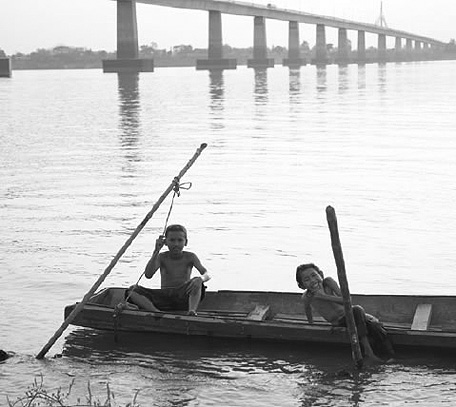
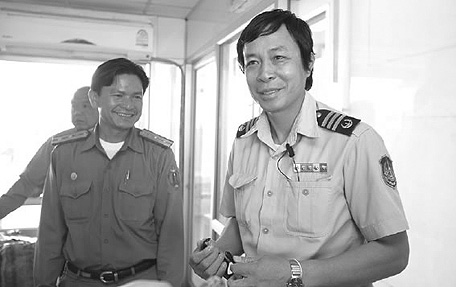
The Second Mekong Friendship Bridge constructed through Japan's assistance as part of the "Second Mekong International Bridge Construction Project" in Laos. It is expected to develop as an east-west economic corridor connecting Thailand and Laos.(Photo: Shinichi Kuno/JICA)
Terminology
*Building a low-carbon society
This refers to the use of Japan's environmental technology and other superior technology to provide support that includes the high-efficiency power stations, forest management, promotion of energy conservation and renewable energy, establishment of related systems, and waste management, in order to build a society with low emissions of carbon dioxide.
*Chiang Mai Initiative
An agreement for local financial cooperation adopted by ASEAN+3 (Japan, China, South Korea). It is a mechanism to assist countries in East Asia that have experienced an economic crisis and suffer a dramatic shortage of foreign currency, by exchanging dollars held as a foreign reserve by each Asian country into the currency of that country, to make up for shortages in foreign currency.
Notes:
(22) ASEAN member states: Brunei, Indonesia, Malaysia, Philippines, Thailand, Cambodia, Laos, Myanmar, Singapore, Vietnam
(23) Mekong countries: Cambodia, Thailand, Vietnam, Myanmar, Laos
A Decade toward the Green Mekong
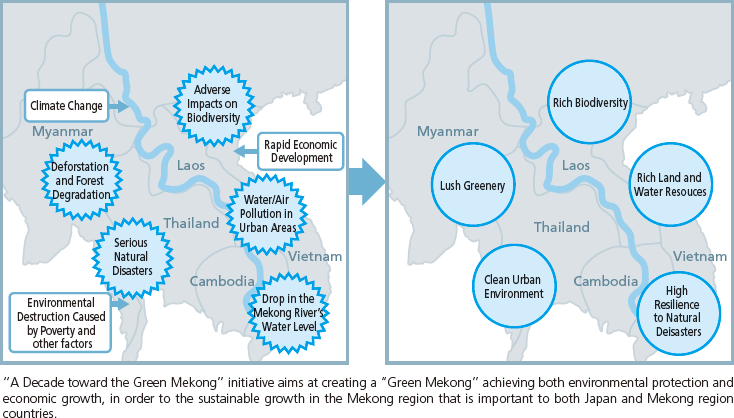
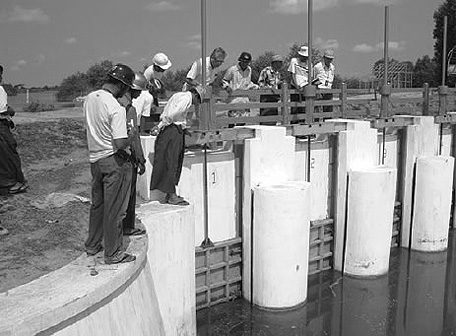
Confirming the status and function of the sluice gate after repairing the circle sluice gate as part of the "Project for Preservation of Farming Area for Urgent Rehabilitation of Agricultural Production and Rural Life in Areas Affected by Cyclone Nargis" in Myanmar (Photo: JICA)
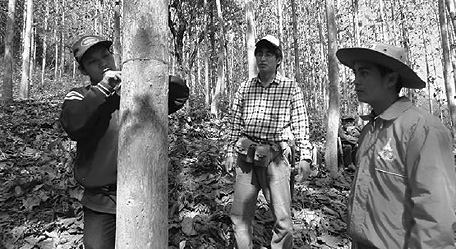
A Japanese expert gives instruction on methods of investigating forest resources as part of the "Participatory Land and Forest Management Project for Reducing Deforestation" in Laos (Photo: JICA)
[Vietnam]
"Project for Human Resource Development of Technicians at Hanoi University of Industry"
Technical Cooperation Project (January 2010 - Current)
Vietnam has moved toward a market economy, and has maintained a high rate of economic growth since the implementation of the Doi Moi reform program in 1986. Vietnam joined the World Trade Organization (WTO) in 2007. Because of these factors, Vietnam has seen a dramatic increase in the advance of foreign companies and establishment of joint venture companies. However, there are not enough capable technicians who can meet the needs of industry, so the development of technical human resources has become a significant issue. Thus, Japan has launched a technical cooperation project to review and revise educational and training methods and develop instructors focusing mainly on the fields of machinery and metals. The project is conducted from Hanoi University of Industry, a base school for the training of technicians in northern Vietnam. This cooperation is expected to establish frontline systems of development of industrial human resources that match the needs of industries including Japanese companies, in Vietnam.
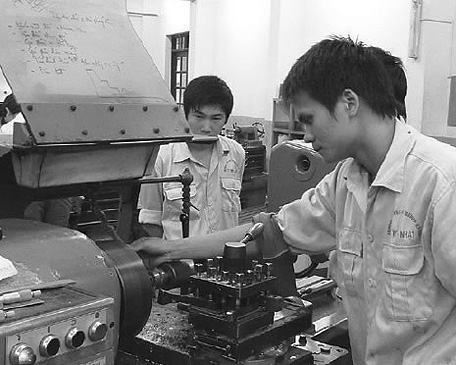
Students receiving practical training on a lathe (Photo: JICA)
•Relations with China
Since 1979 Japan's ODA to China has provided assistance for the development of infrastructure in coastal areas, environmental issues, improvement in basic human needs such as health and medical care, and the development of human resources, thereby contributing to the steady development of the Chinese economy. Japan's assistance has also played a significant role in promoting and maintaining the reform and opening up policy of China. The majority of this assistance was provided to China in the form of ODA loans. In addition to supporting the development of the economic relationship between Japan and China, this ODA has functioned as a fundamental pillar of the multilayered Japan-China relationship. On a variety of occasions, Chinese side including Chinese summit level have expressed gratitude. In light of China's remarkable economic development in recent years, both countries recognized that new disbursement of Japan's ODA loans to China would come to an amicable conclusion by the time of the 2008 Beijing Olympics. Such new disbursement ended with the signing of Exchanges of Notes for six projects in December 2007.
On the other hand, the people of both Japan and China face many common strategic issues including global issues such as environmental problems, infectious diseases, and other problems that may have direct impact on Japan as well. During Chinese President Hu Jintao's visit to Japan in May 2008, the two countries issued the "Joint Statement between the Government of Japan and the Government of the People's Republic of China on Comprehensive Promotion of a Mutually Beneficial Relationship Based on Common Strategic Interests" to confirm that the nations would place particular emphasis on cooperation in the fields of energy and the environment, and made a joint statement on climate change. In addition, as supporting each other's peaceful development between Japan and China, it is important to deepen mutual understanding between the people of the two countries.
In the current China- Japan relationship that aims to achieve and deepen "mutually beneficial relationship based on common strategic interests," and taking into consideration the 40th anniversary of the normalization of diplomatic ties between Japan and China in 2012, it has become important to build a new type of cooperation between Japan and China. However, China has developed economically, and has seen an increase in its technological level, so aid to China through ODA has already fulfilled its role to a certain degree. In light of these circumstances, implementation of purely exchange projects through ODA will stop, and future ODA for China will be limited to the promotion of mutual understanding at the grassroots level and to efforts to deal with shared challenges faced by both countries (for example, measures against pollution, yellow sand, and infectious diseases that cross into Japan, and the resolution of other such issues, as well as the creation of systems and standards to increase the predictability of companies that enter the Chinese market), and to areas that will be beneficial to Japan.
Japan’s international cooperation policy in the East Asia Region
